There isn’t just one way to build your own vegetable garden. Sorry. I know people often want a blueprint that they can follow that will give them the perfect permaculture garden design.
But here’s the thing: there is no such thing as a perfect garden blueprint that works for everyone, everywhere.
So, in order for you to build a permaculture garden that suits your space, time, resources, climate, and preferences, you have to go through a planning phase, and answer a few questions.
Things to consider when planning a garden
Where on your property is the best place for a garden? There are a few things to consider – sun/shade, water, soil, etc. Let’s go through them one at a time.
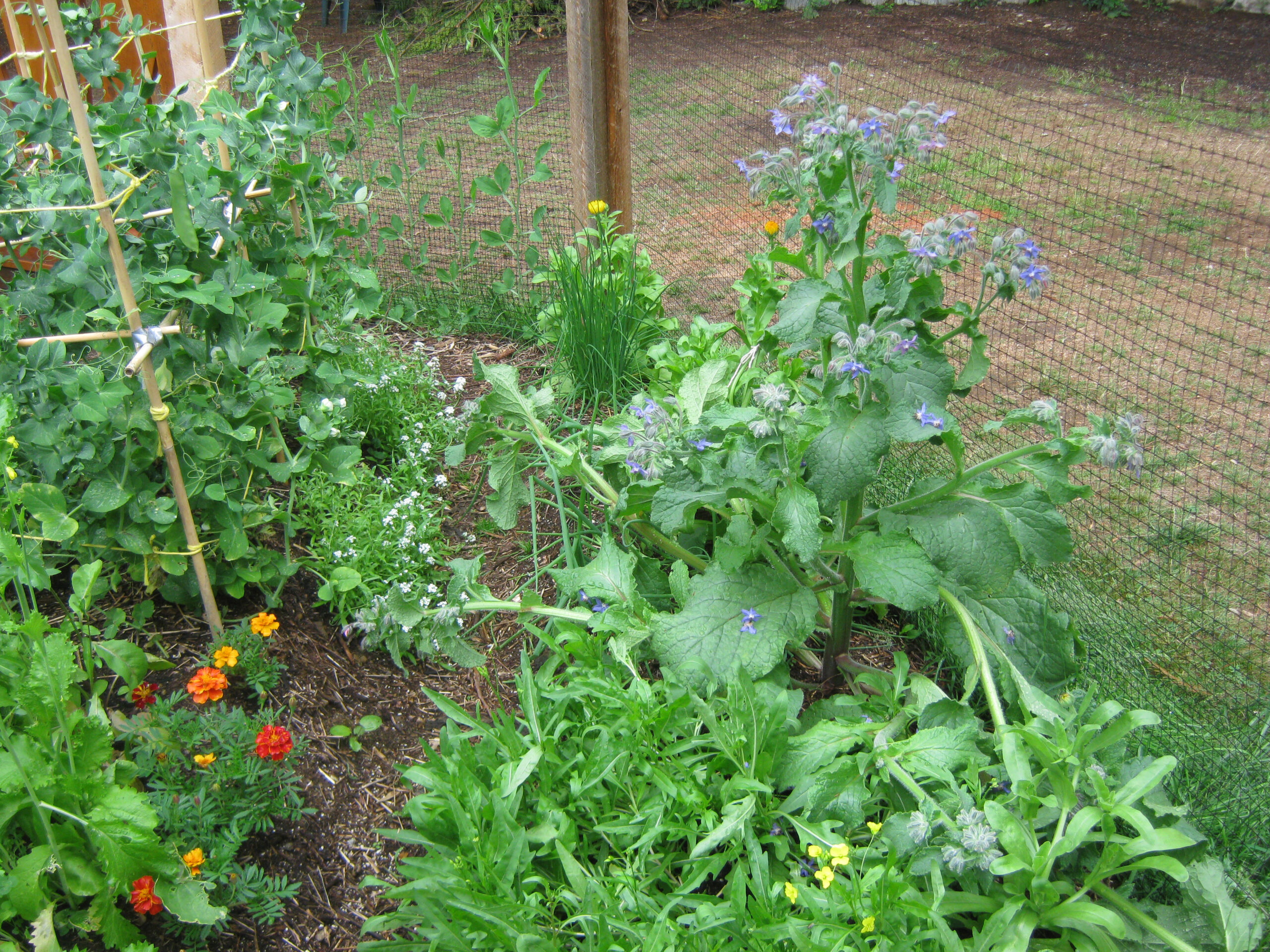
Sun/shade
A permaculture garden, just like any other garden, needs to get as much sun as possible. But don’t worry if it is partially shaded. There are plenty of things that grow quite happily in partial shade, and we can’t all have the ideal garden situation.
In the northern hemisphere, you want your garden to generally face south. And in the southern hemisphere, you want your garden to generally face north. Pretty simple.
But don’t think that just because your property isn’t oriented that way – or you have large trees or structures casting shade – that you can’t have a great garden.
My garden is surrounded by very tall trees, and at the peak of summer, it was still partly in the shade at 10am, and was back in the shade by 6ish – and it gets a LOT of shade in some areas. But it grew quite happily all summer long, and we happily ate the bounty.
Mustards and pac choi are very shade tolerant. In fact, they bolt to seed quickly in the hot sun. Radishes and lettuces are the same – the coolness of the shade makes them happy.
Even broccoli will put up with a bit of a shady garden. I harvested many lovely heads of broccoli last summer; and I plan to grow much more this year.
Growing short season varieties is a great way to help mediate the effects of a low-light situation. Find seeds that have a short DTM (Days to Maturity).
So, don’t despair. Shade doesn’t mean that you can’t garden; it just means that you have to think about it a little more deeply, and plan your plantings more carefully.
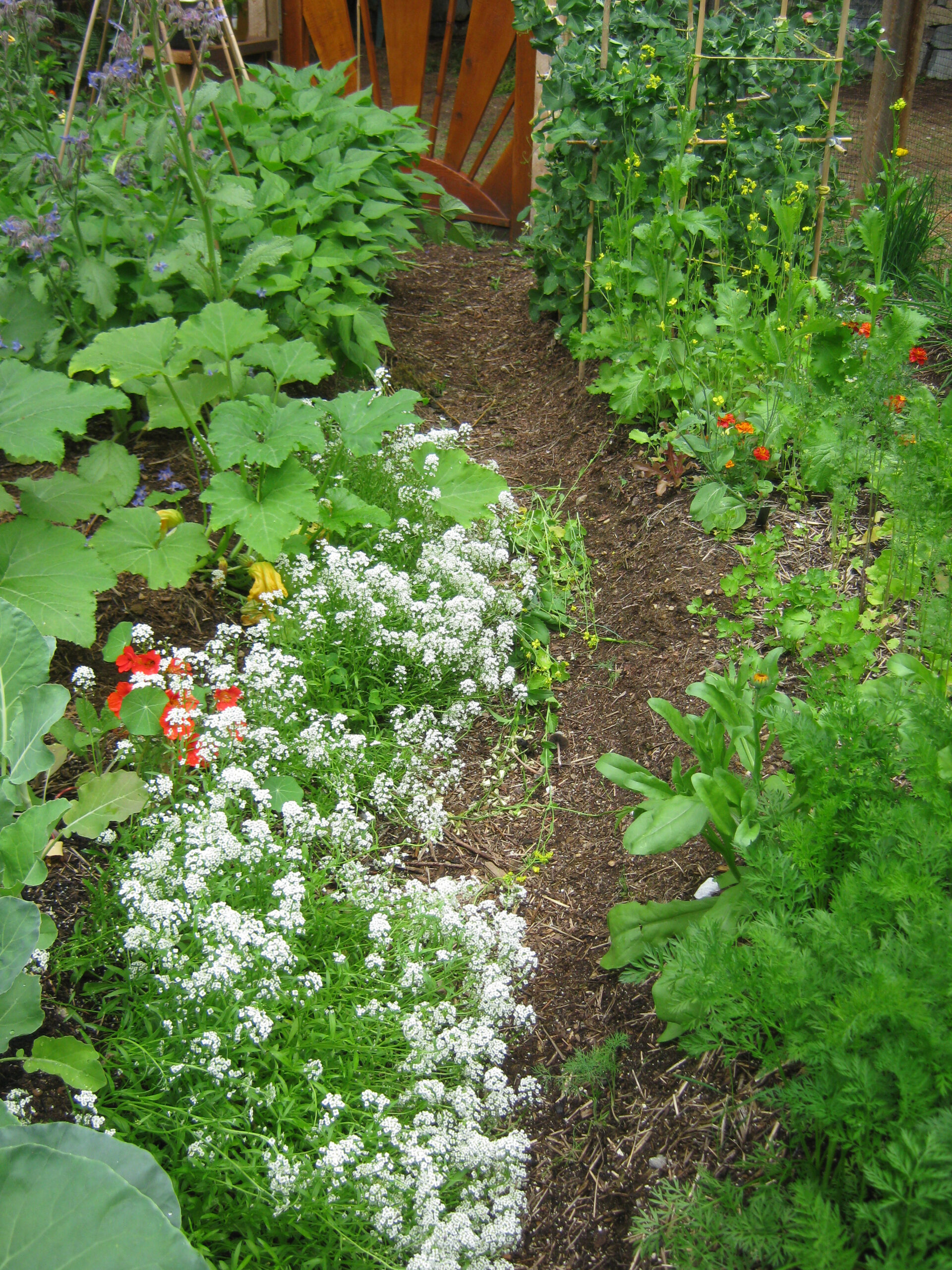
Water
The second thing you’ll be considering is water. Where will your water come from? Do you have an outside tap nearby, or will you have to stretch hoses long distances to reach the garden?
I don’t like to leave hoses out in the sun, as there is a lot of leaching that goes on with a hose, and the hotter it gets, the smellier the water is. Uck.
Perhaps you can run an underground pipe from the house to the garden, and put a tap right at the gate. Or maybe you have a pond at a higher elevation, and can have gravity fed water down to the garden.
Another option to think about is building your permaculture garden so it is drought tolerant, and won’t need as much watering as a conventional garden.
Hugelkultur fits the bill for that one. Hugelkultur is basically old logs and such, covered with soil, and then planted. Read more about hugelkultur in this article.
Building up your soil to contain lots of water-holding organic matter is of course an ideal way to keep your garden hydrated and drought resistant. Manure and compost are common ways to add organic matter to your garden.
The more organic matter you add, the better the water holding capability your garden will have. (And the healthier your soil will be, of course.)
Another aspect of watering you’ll need to consider, is how you will deliver the water to your garden. If it is small enough, you can water by hand, either with a hose sprayer, or a watering can.
But if it is quite a large garden, or you are not always home to water, then setting up an automatic watering system might be necessary. This can come in the form of drip irrigation, or sprinklers set on a timer.
I love watering by hand with a sprayer. It gets me out in the garden, looking at the plants, picking any weeds that have gotten out of hand, checking for bugs, and just enjoying the garden.
It also enables me to pick and choose which areas get watered, and how much. Not all veggies like the same amount of water. And when you have things drying down and setting seed, you don’t want to water them. Especially overhead.
But the main point is to place your garden where water is easily accessible; or set up a system that is easy to use. This will ensure that you will get out there and water when it’s needed.
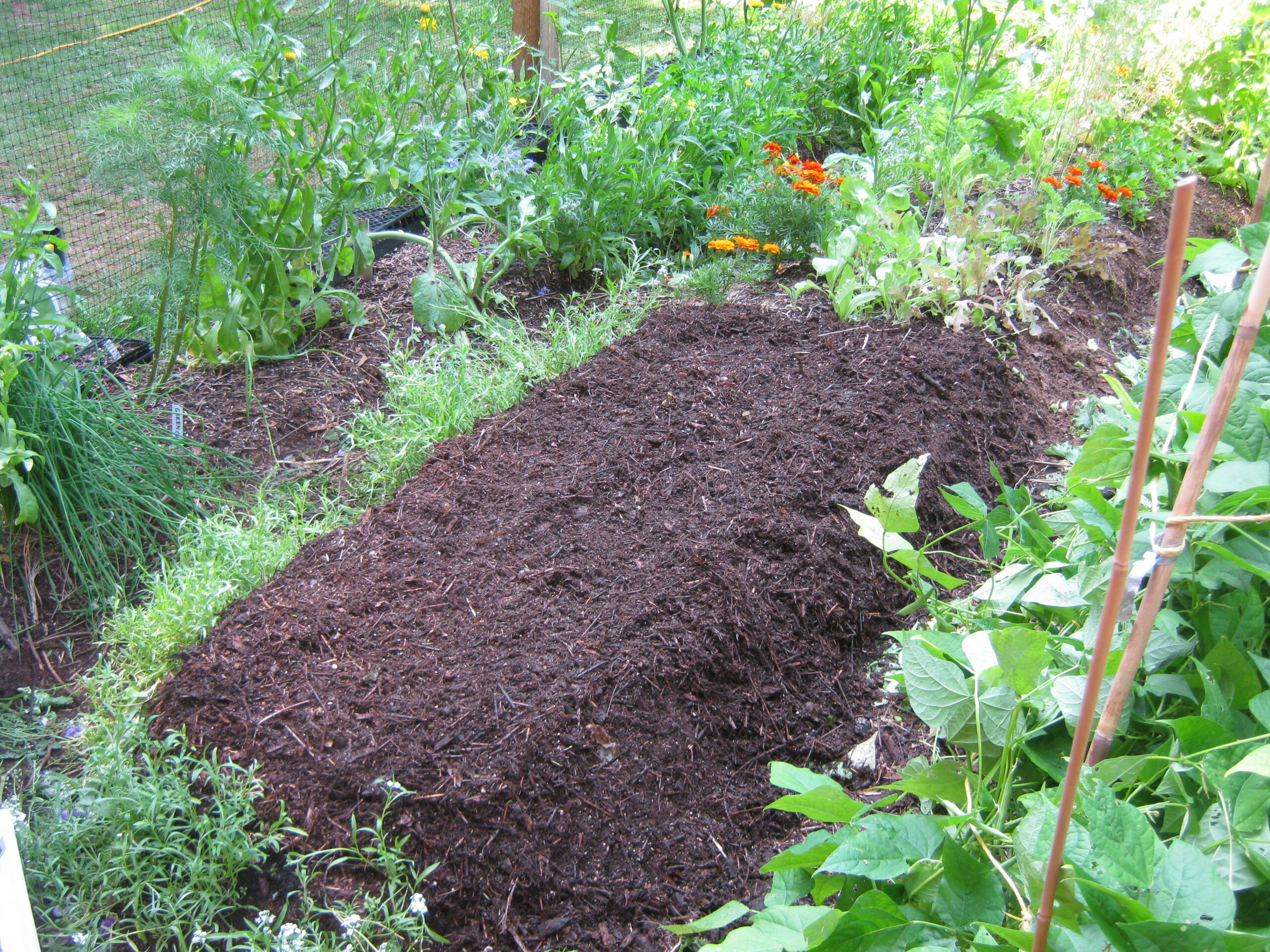
Soil
Next, let’s look at what kind of soil you have in your chosen garden area, and the implications of the different kinds.
Sandy soil is, of course, very well draining. There isn’t enough organic matter in it to hold water or provide nutrition for your plants; but sandy soil is really great for some plants. Asparagus loves sandy soil; and any plants that like good drainage will want to have some sand in the soil.
Clay soil holds water well. Sometimes too well. But it can also dry out and become like cement if it’s left uncovered. Clay soil needs help in the form of lots of organic matter and some sand. But you don’t want to till it up and try to mix everything into the clay. This often causes more problems, such as compaction. Nasty stuff.
The thing to do with clay soils is to build the organic matter up on top of it. Layers of rich organic compost put on top of clay will grow a great garden.
And as you keep adding compost, and the soil microorganisms begin to multiply, there will be a trickle down effect, and the clay underneath will begin to absorb that goodness.
Plant roots, reaching down for water, will decay after harvest, adding air pockets and organic matter to the clay, breaking it up, and letting water drain through.
Growing big rooted things like daikon radish is great for breaking up clay soils, and adding organic matter. Plant lots, and don’t harvest them all. Just let them decay in the ground. Year after year, the garden will get better, and that clay will begin to turn into soft garden soil.
The main things to remember with clay soil are: don’t till it, and keep it covered!

Sandy and clay are the two soil extremes that people generally come up against. There are lots of soil mixes falling between these two extremes; but the advice is always the same: keep adding organic matter, and don’t till it up!
Compost is the gardener’s greatest asset. Most people feel that they don’t have room to compost, or it will attract too many pesky critters.
But ask yourself this: do you want to have a healthy garden that grows healthy, nutrient dense food? If you answered yes (and who wouldn’t?!) then you need to compost.
If you’re worried about your soil lacking the minerals needed to support the plants you want to grow, you can get a soil test done. Search online for a soil testing lab in your area, and follow their guidelines for collecting a sample. If you get an in-depth test done, you’ll get a really good idea of what your soil has, and what it needs. This will give you a great start.
They may suggest adding different amendments if you’re low on some nutrients. Just be sure to get the natural and/or organic versions. And also remember: a compost that contains a diverse variety of components will provide what your plants need to grow beautifully.
So do your research, and make sure that you really do need to add any amendments, as this can get pricey. And it can be a waste if you don’t really need it.
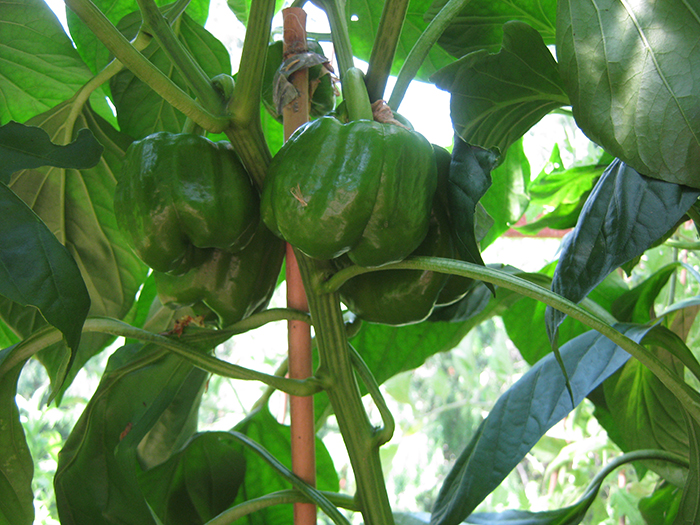
What to Grow in Your Permaculture Garden
The first two questions that you need to ask yourself are, “What do I like to eat?” and “What grows in my climate?” There is no point in growing a bunch of stuff you don’t actually like; and even less point in trying to grow stuff that won’t grow where you live.
That being said, there are occasions you’ll want to grow things that you don’t eat. These can be herbs and flowers that you don’t necessarily eat, but which are great for the system; or foods that you will feed to the animals you’re raising. Or maybe you want to try something new, so you plant a small plot to test it out.
As for only growing things that are suited to your climate, there are exceptions to that rule too. For instance, maybe you have an awesome heated greenhouse (hopefully heated by passive solar, and/or a rocket mass heater) and you can push the envelope a bit in there.
Or maybe you have an amazing micro climate situation where you can try out borderline varieties that grow best in the USDA growing zone above the one you’re currently in. You just never know.
But as a general rule, if you’re just starting out in the gardening world, or are growing in a new climate zone, it is best to stick to what works until you know your garden better. Grow the things that you and your family will eat, and grow what grows well where you are.
There are charts you can find online that tell you how much to plant per person, so you don’t have too little or too much of anything. Start there, and adjust year after year until you hit the right balance.
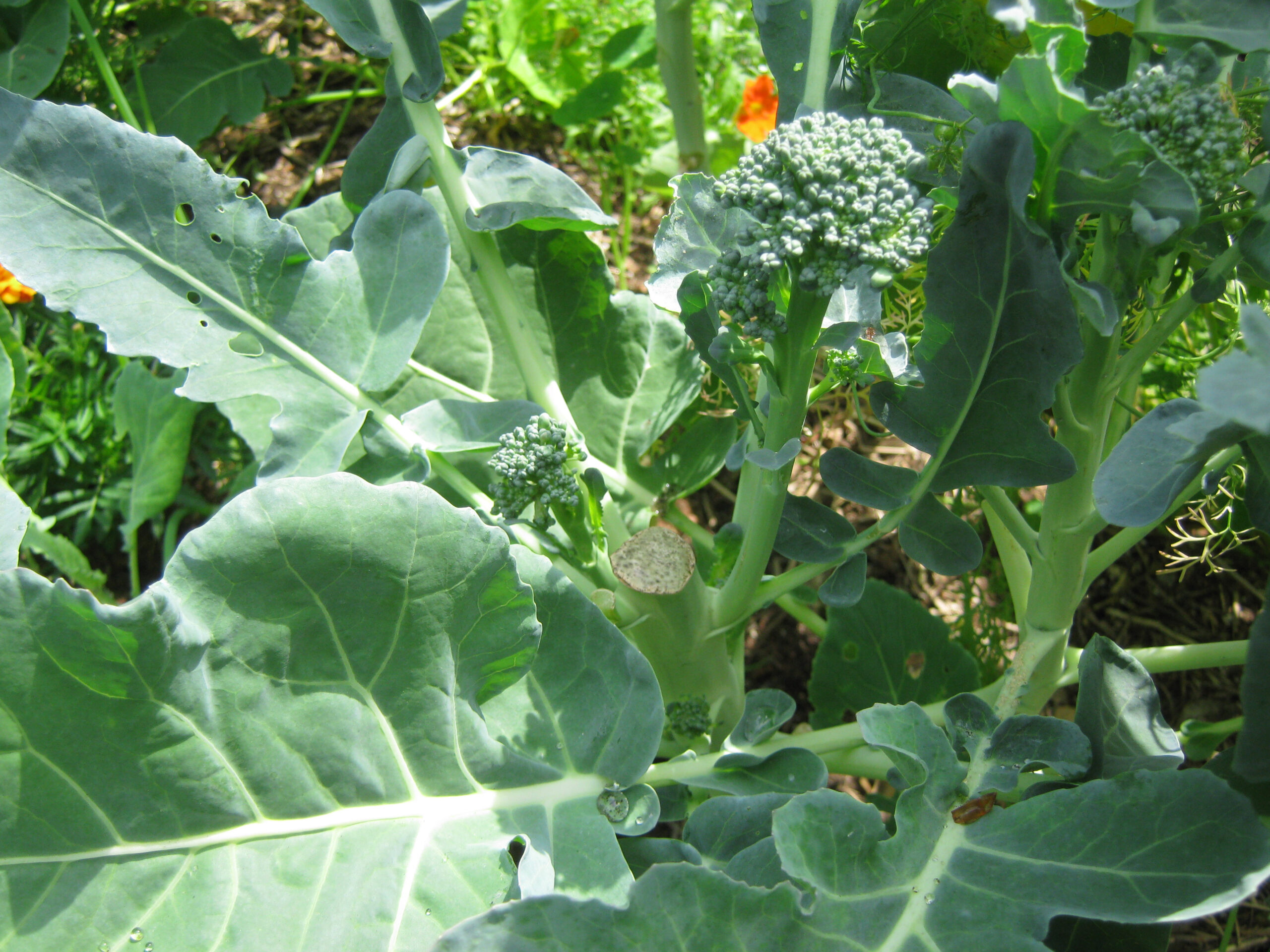
Ways to Build a Permaculture Garden
Now that you’ve figured out the best place to build your garden, and what you’re going to plant in it, you need to consider how exactly you’re going to build it.
The conventional way is to till up a big square and plant straight rows of crops. A variation of that is to till up a big square, rake the soil into hilled beds, and plant rows of crops. And then next year you till it all up and start again.
Please don’t build that garden.
Because you’re here reading this blog, I assume that you are looking for alternatives to ‘conventional’ gardening, with all of its tilling and fertilizing and pest poison applications. I’m pretty happy about that.
Permaculture offers many options for building gardens. Whether you only have a small area of yard in an urban setting, or are looking at acres of growing systems, there are options for you. And you don’t have to just pick one. You can mix and match different techniques and strategies to fit with your situation.
I chose a variation of hugelkultur – buried wood beds in trenches – to build my permaculture gardens because it fit in well with my situation. Other variations of hugelkultur are to pile the wood on top of the grass and cover with soil.
In order to do that, you have to have a place to source that soil. That’s why I chose to dig trenches, put the wood in, and then cover it with the soil removed when the trenches were dug.
Hugelkultur and buried wood beds can be a variety of sizes, from seven feet tall, to actual sunken beds (great for really arid areas). It all depends on the area you live in, the resources you have, and what you’ll be growing.
I really like the idea of a seven-foot tall hugelkultur, and hopefully I’ll be able to build one some day. In the meantime, the buried wood is working for me.
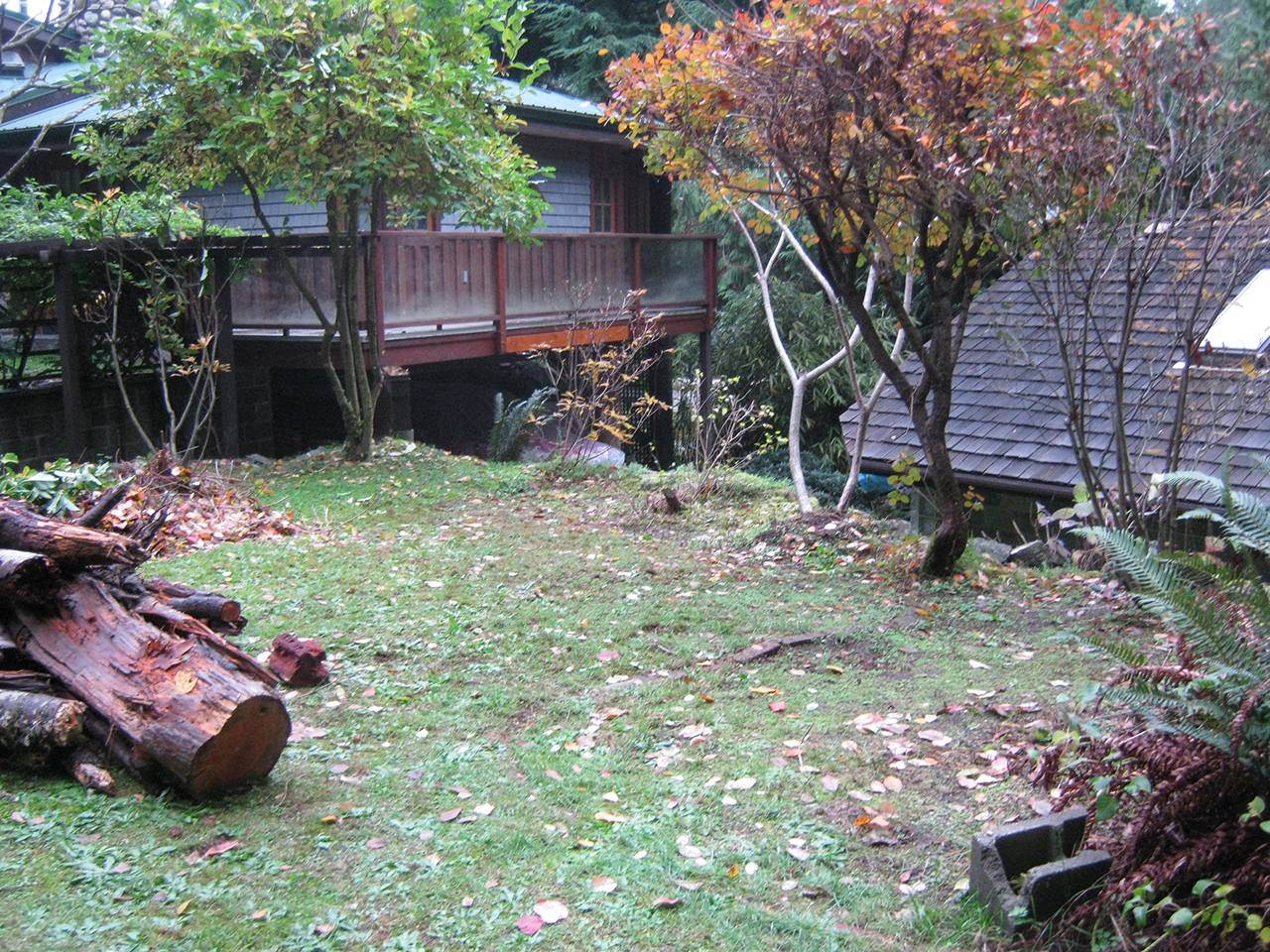
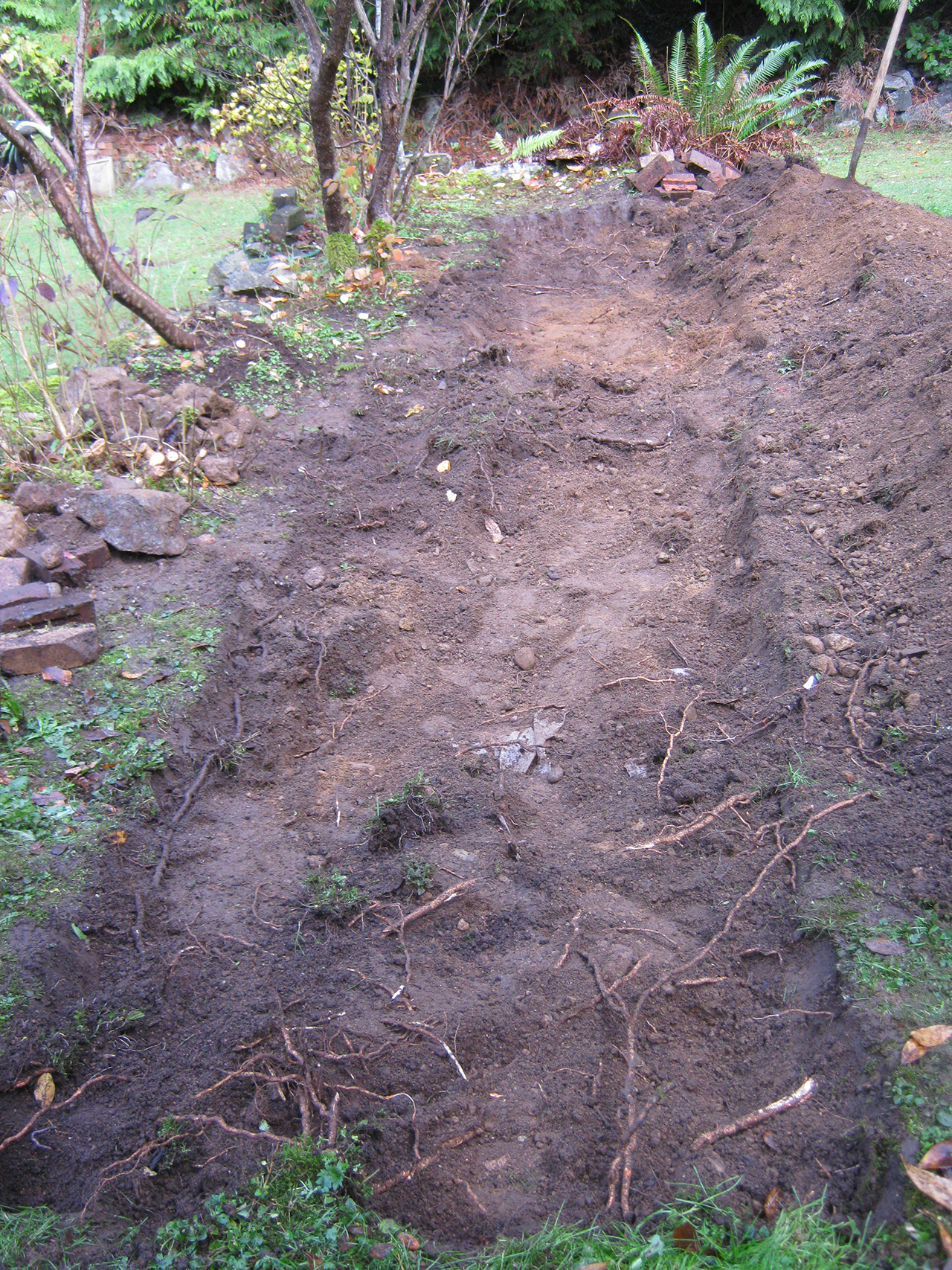

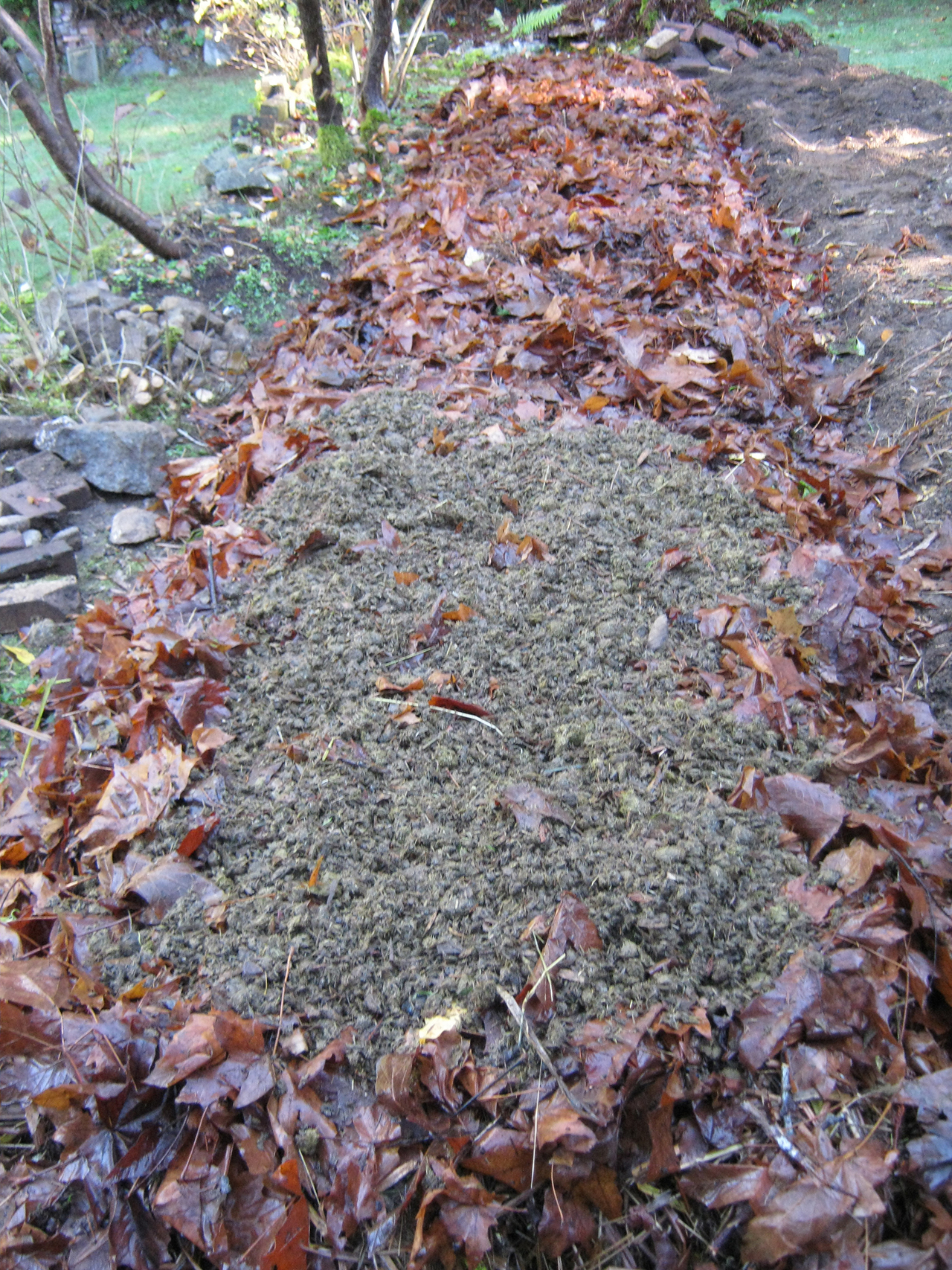


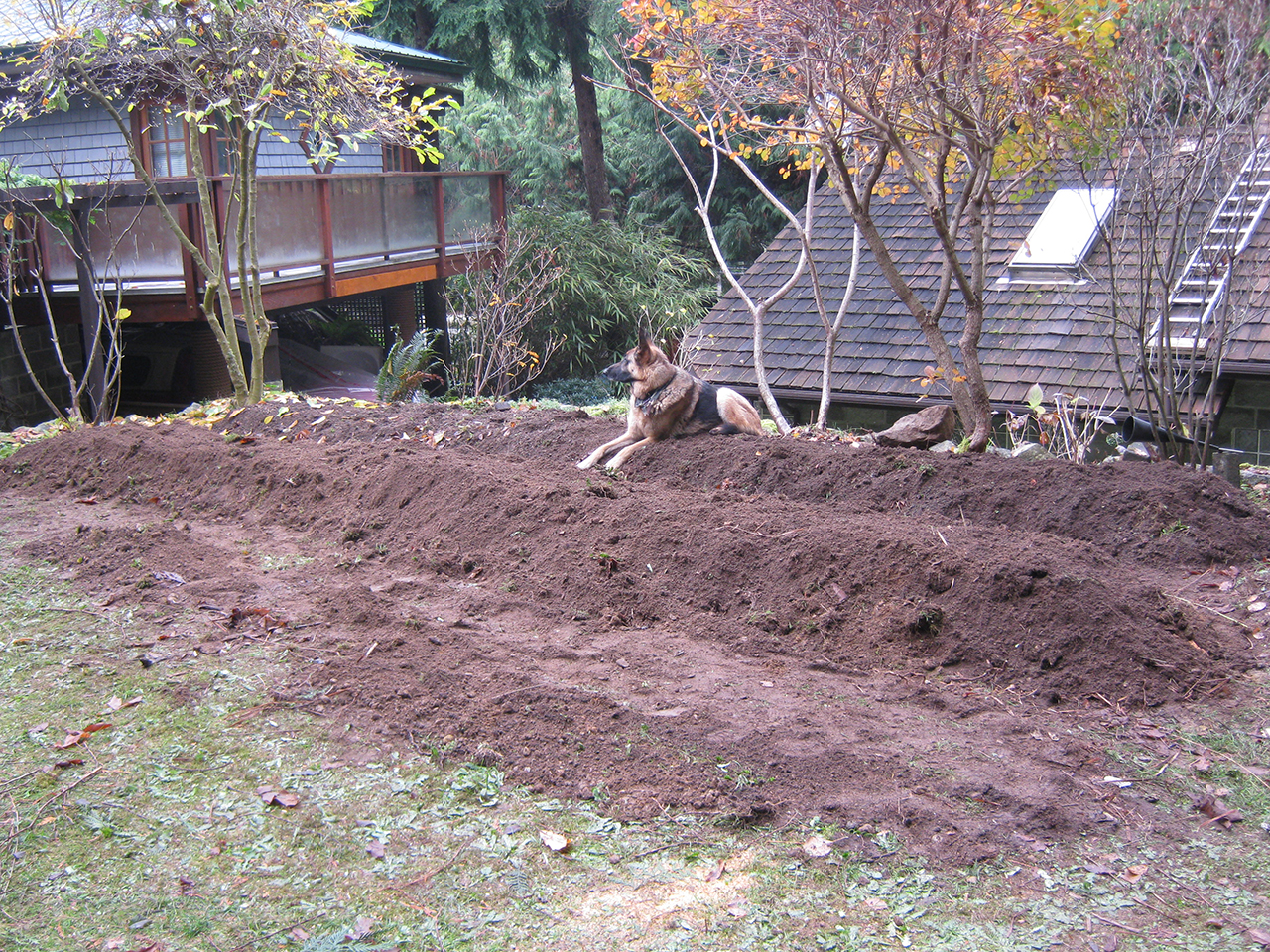
This is how I chose to build my permaculture garden. But there are other ways one can get started quickly, without all that digging. Let’s look at a few of those techniques.
A quick and easy start is to lay down a layer of cardboard, or a thick layer of newspaper, (well soaked with water) over the existing soil and plants, and spread a thick layer of compost on top of that.
Charles Dowding, the champion of No-Dig gardening, uses this technique beautifully. Check out his Youtube channel. He shares so much great information; and he’s very pleasant to listen to.
Others do a variation of this technique by layering compost materials such as grass clippings, manure and other greens, alternating with browns such as leaves and straw. This is called a ‘lasagna garden’, and is great to build in the fall so it can sit for a while before planting so the materials compost and create a very fertile garden bed.
You never dig up these beds. The cardboard will eventually breakdown, adding organic matter to the system, and you just keep adding compost each year.
I’d just like to briefly mention another growing system that is very popular in permaculture circles – and something I can’t WAIT to do – a food forest. There are as many ways to do this as there are people doing it, and it’s much too involved to get into here, but you can take a look at this article about food forests, to learn more.
Okay, so we’ve looked at a variety of ways to use hugelkultur techniques; and how to set up a quick and easy garden by just covering the ground with organic matter of different types and planting into it.
All of these methods are used by lots of different people – some who consider themselves permaculture practitioners, and some who consider themselves organic gardeners.
And that’s the beauty of permaculture: it is a conglomeration of a wide variety of techniques, strategies, and ideas, taken from many places. It is a giant tool box, which has been handpicked to hold only the best tools for the job.
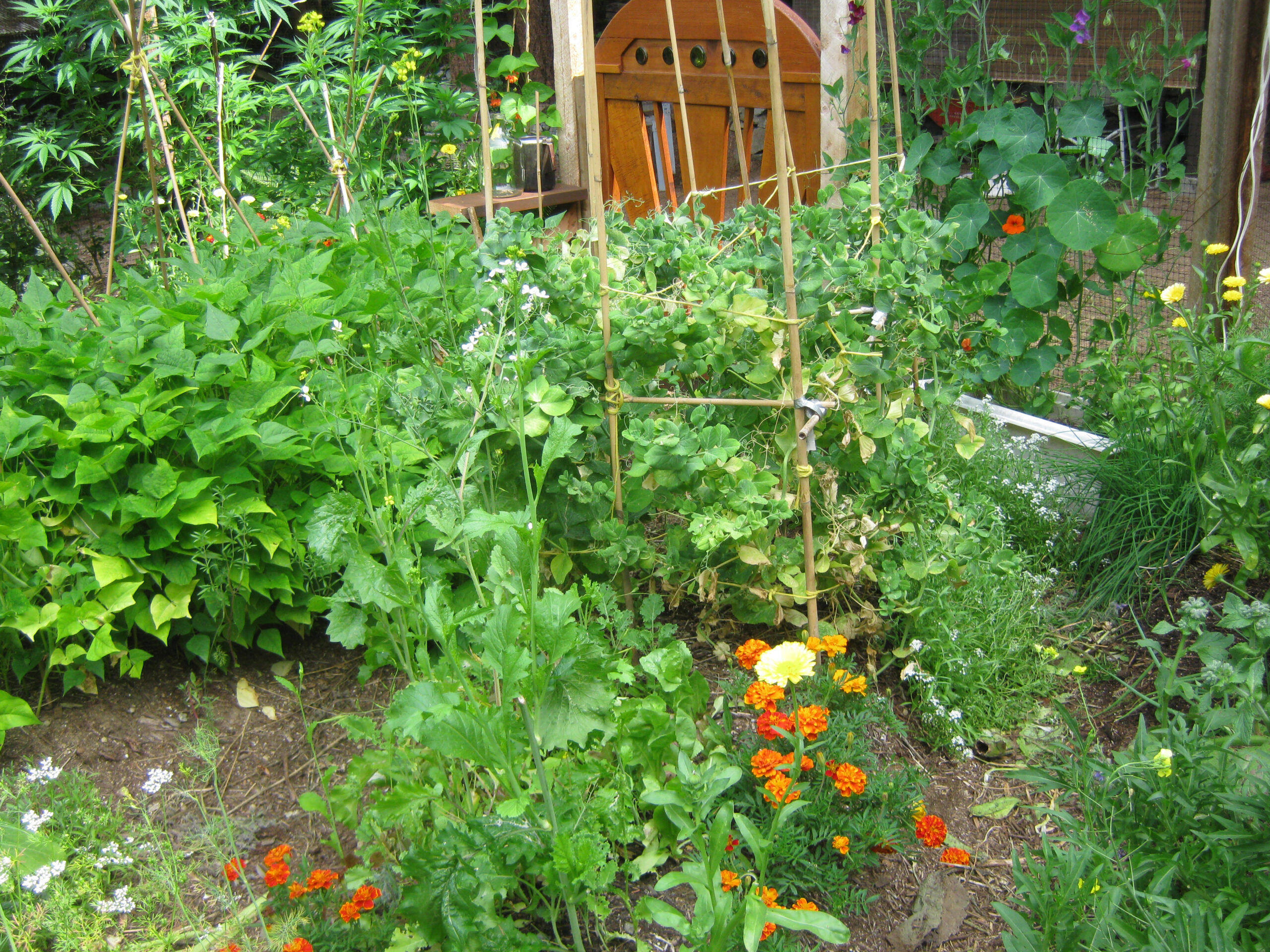
Ways to Plant a Permaculture Garden
The days of planting row after row of a single crop will hopefully be gone soon. This is called a mono-culture, and it has caused a lot of problems in the world. I’ll get into that in another post.
For this post, I want to talk a bit about polyculture. This is the exact opposite of mono-culture, and is a much healthier way to grow plants.
Just think about it – how often do you see only one thing growing in one area out in the natural world? You don’t. ‘Cause it just ain’t natural.
In nature, plants and shrubs and trees and things are all growing together. And there is a reason for that: they support each in myriad ways we are just now beginning to understand.
Polycultures, like many things ‘permaculture garden’, can be done in a few different ways. There is the purist’s way, which is to mix all the seeds together and just scatter them around the garden.
The idea is that things will grow where they are the happiest growing, all jumbled together. And this is a great idea. Unless you are growing a market garden, and you want to make harvesting a little easier and faster.
If you are in the market garden niche, or you just like the order and accessibility of rows of vegetables, you can still use the polyculture idea.
I interplant a lot of flowers and herbs; put rows of different veg right beside each other, where they sometimes intertwine; and undersow seeds or seedlings of a different crop before a mature crop has been harvested. These are all ways to ‘mix it up’ and get a little bit of polyculture goodness happening in the garden.
Companion planting is another type of polyculture, and is practiced by many gardeners, organic, permaculture, and otherwise. Some swear by it, and others aren’t so sure that it’s necessary.
There is more companion planting information online than you can shake a stick at. And as I don’t have any real anecdotal proof that any of it works, I suggest you do some research, and then try some experiments of your own.
But the main goal of both companion planting and polyculture in a permaculture garden is to attract beneficial insects, deter pest insects and disease, and give support in other ways to the plants we’re growing.
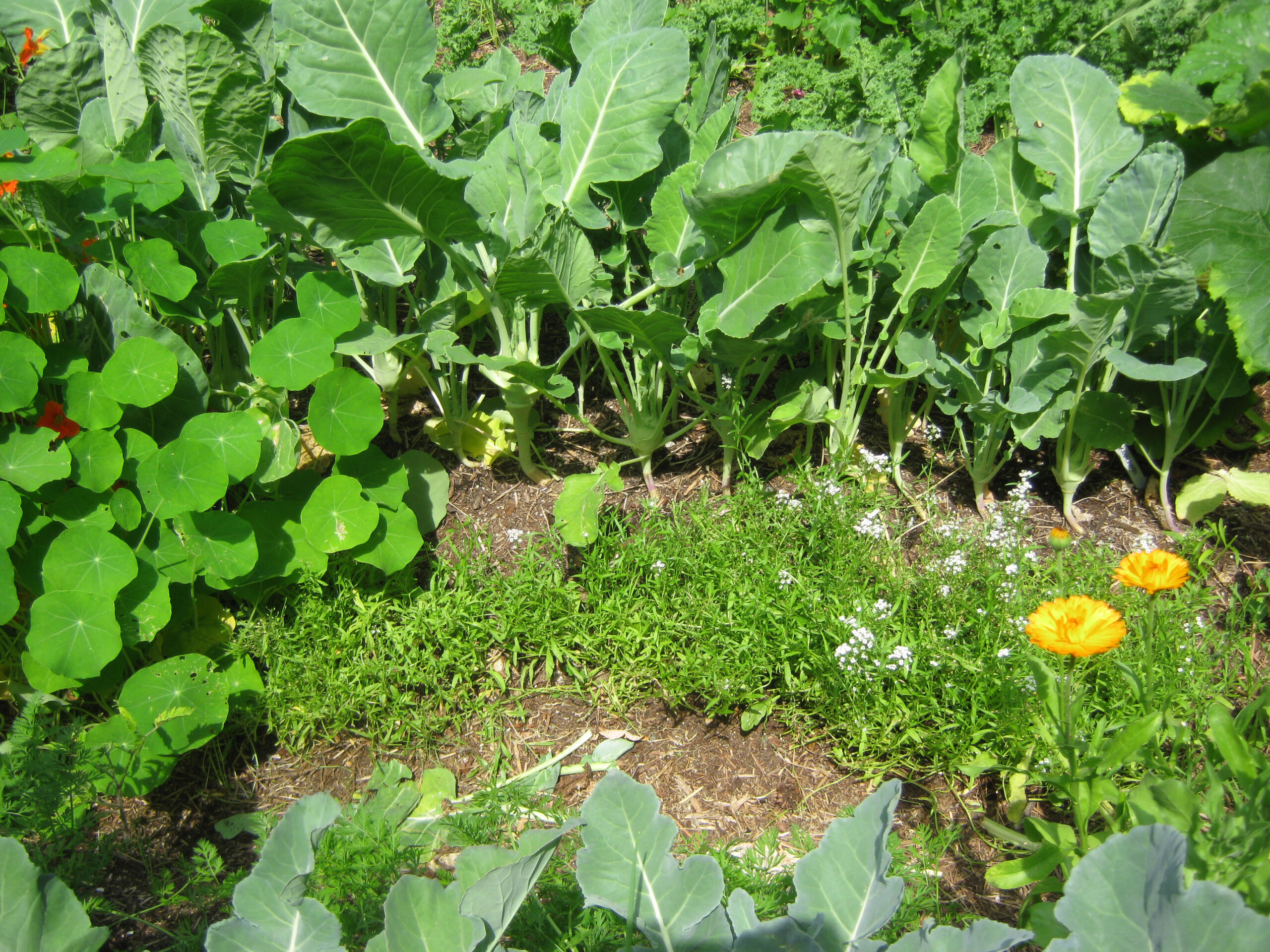
To Till, or Not to Till? (Hint: NOT)
So, you might be wondering about the whole ‘tilling’ thing. It has been drummed into us for decades that we must till up the soil year after year in order to grow a successful garden.
But it just ain’t so. Learn about the soil food web, and how essential it is to keep this web intact in order to create and sustain healthy soils. Dr. Elaine Ingham teaches about all the wonderful creatures that live in the soil, and enable our soils to grow the healthiest foods.
She also offers some amazing an in-depth courses which will enable you to become a soil expert and a consultant. You could even open your own soil lab! I plan on doing it, when I have the cash. The courses aren’t cheap, but I believe they are top notch.
Anyway, back to the matter at hand: tilling year after year breaks up this soil food web, and then it has to start all over again to rebuild what you just broke up. It never gets to increase and become truly healthy, because it is always having to start over. This will not make for happy soil.
If you feel that you need to till up your soil at the beginning as you build your garden, for whatever reason, that’s fine. But please try to set up a system where you don’t till anymore after that. You will be so happy that you did.
I hope that you have learned a little bit about how to build your own vegetable garden. It can be a very simple process, and it will always be fruitful. Growing and harvesting your own healthy organic vegetables is one of the greatest gifts you can give yourself and your family.
If you have any questions or suggestions, I hope you’ll leave them in the comments box below. I’ll always answer; and I might even be helpful! : )
Health, Hope & Happiness
Tracy
